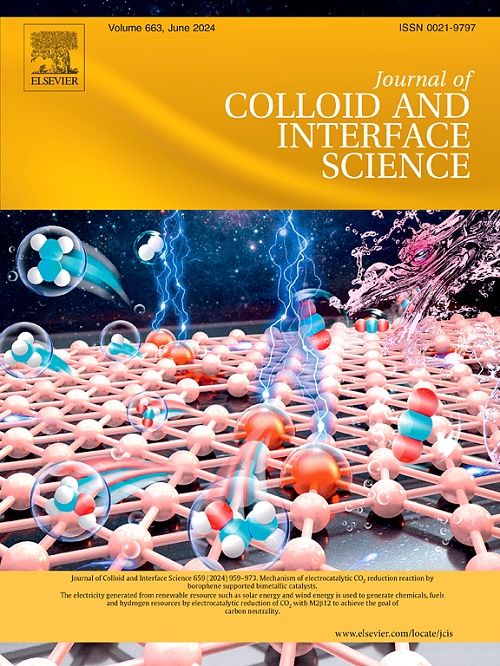Revisit the actual roles of catalytic sites in a Fenton-like system
IF 9.4
1区 化学
Q1 CHEMISTRY, PHYSICAL
引用次数: 0
Abstract
The perception of catalytic site contributions in peroxymonosulfate (PMS)/biochar systems is biased due to the neglect of active site interactions. Here, random forest regression (RF), supporting vector regression (SVR), XGBoost (XGB), and gradient boosting decision tree (GBDT) are selected to construct models using active sites (A model) instead of elements (E model) as input features to revisit the relationship between C, N, and O-containing sites on biochar surface and Fenton-like activity. Consequently, the A models achieve twice the accuracy of the E models. For individual sites, a low C![]() C or high C
C or high C![]() N concentration promotes the degradation of electron-donating organics in PMS systems, while system activity initially increases and then declines with rising C
N concentration promotes the degradation of electron-donating organics in PMS systems, while system activity initially increases and then declines with rising C![]() O concentration. Considering site interactions, C
O concentration. Considering site interactions, C![]() C&C
C&C![]() O, C
O, C![]() C&C
C&C![]() N, and C
N, and C![]() O&C
O&C![]() N show excellent synergy for PMS activation. Specifically, the Gibbs free energy (ΔG) of PMS at C
N show excellent synergy for PMS activation. Specifically, the Gibbs free energy (ΔG) of PMS at C![]() C&C
C&C![]() O (0.44 eV), C
O (0.44 eV), C![]() N&C
N&C![]() O (0.78 eV), and C
O (0.78 eV), and C![]() C&C
C&C![]() N (0.82 eV) is significantly lower than that of single C
N (0.82 eV) is significantly lower than that of single C![]() C (2.26 eV), C
C (2.26 eV), C![]() N (1.44 eV), and C
N (1.44 eV), and C![]() O&C
O&C![]() O (1.14 eV) during the transition state formation process. The reduced ΔG facilitates O
O (1.14 eV) during the transition state formation process. The reduced ΔG facilitates O![]() O bond cleavage, enhancing the generation of active species. This study employs A_SVR model and density functional theory (DFT) calculations to clarify the structure–activity relationships of biochar by considering the synergistic effects of active site. The results contribute to the precise design of Fenton-like catalysts for targeted pollutant degradation, improving water purification efficiency.
O bond cleavage, enhancing the generation of active species. This study employs A_SVR model and density functional theory (DFT) calculations to clarify the structure–activity relationships of biochar by considering the synergistic effects of active site. The results contribute to the precise design of Fenton-like catalysts for targeted pollutant degradation, improving water purification efficiency.

重温催化位点在类芬顿体系中的实际作用
由于忽略了活性位点的相互作用,对过氧单硫酸根(PMS)/生物炭系统中催化位点贡献的认识是有偏差的。本文选择随机森林回归(RF)、支持向量回归(SVR)、XGBoost (XGB)和梯度增强决策树(GBDT)构建以活性位点(A模型)代替元素(E模型)作为输入特征的模型,重新审视生物炭表面含C、N和o位点与芬顿类活性之间的关系。因此,A模型的精度是E模型的两倍。对于单个位点,低CC或高CN浓度促进了PMS体系中给电子有机物的降解,而随着CO浓度的升高,系统活性先上升后下降。考虑到位点相互作用,CC&CO、CC&;CN和CO&;CN对PMS的激活表现出良好的协同作用。在过渡态形成过程中,PMS在CC&;CO (0.44 eV)、CN&CO (0.78 eV)和CC&;CN (0.82 eV)下的吉布斯自由能(ΔG)明显低于单一CC (2.26 eV)、CN (1.44 eV)和CO&;CO (1.14 eV)下的吉布斯自由能。还原后的ΔG有利于OO键的裂解,促进活性物质的生成。本研究采用A_SVR模型和密度泛函理论(DFT)计算,考虑活性位点的协同效应,阐明生物炭的构效关系。研究结果有助于精确设计类fenton催化剂,以靶向降解污染物,提高水的净化效率。
本文章由计算机程序翻译,如有差异,请以英文原文为准。
求助全文
约1分钟内获得全文
求助全文
来源期刊
CiteScore
16.10
自引率
7.10%
发文量
2568
审稿时长
2 months
期刊介绍:
The Journal of Colloid and Interface Science publishes original research findings on the fundamental principles of colloid and interface science, as well as innovative applications in various fields. The criteria for publication include impact, quality, novelty, and originality.
Emphasis:
The journal emphasizes fundamental scientific innovation within the following categories:
A.Colloidal Materials and Nanomaterials
B.Soft Colloidal and Self-Assembly Systems
C.Adsorption, Catalysis, and Electrochemistry
D.Interfacial Processes, Capillarity, and Wetting
E.Biomaterials and Nanomedicine
F.Energy Conversion and Storage, and Environmental Technologies

 求助内容:
求助内容: 应助结果提醒方式:
应助结果提醒方式:


